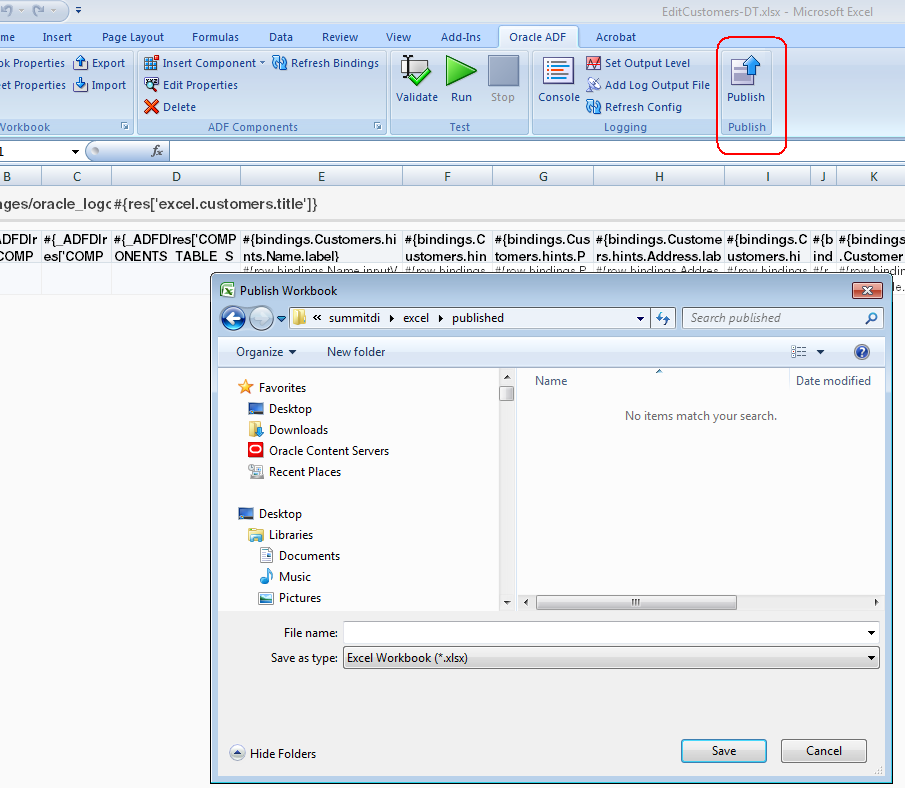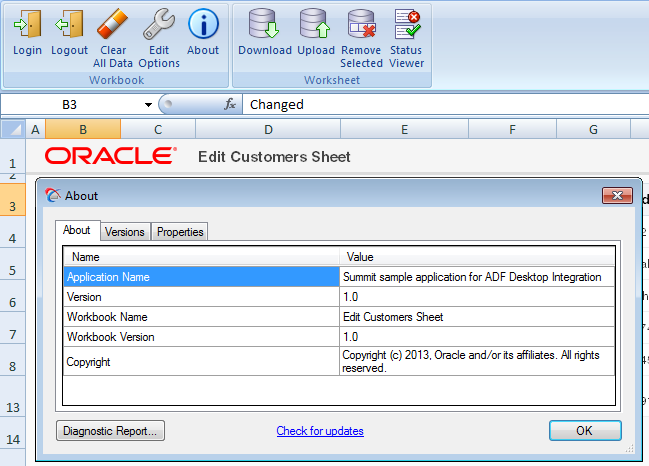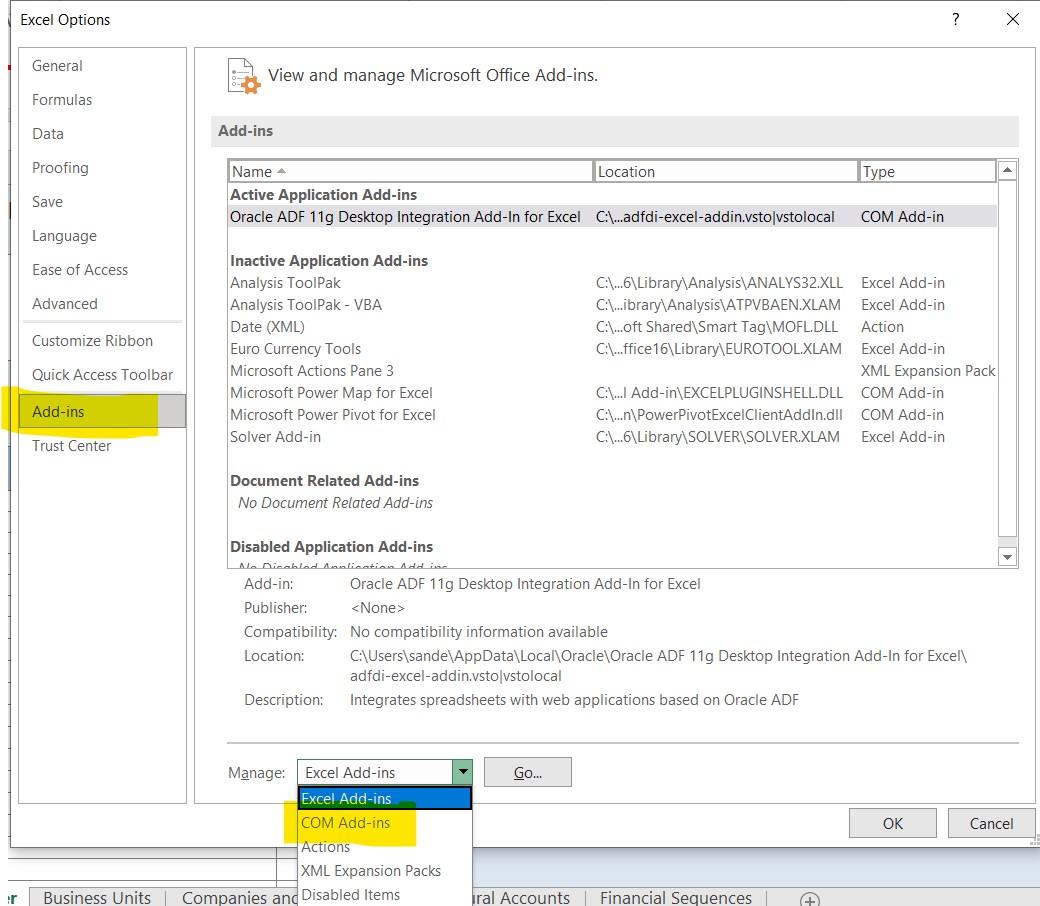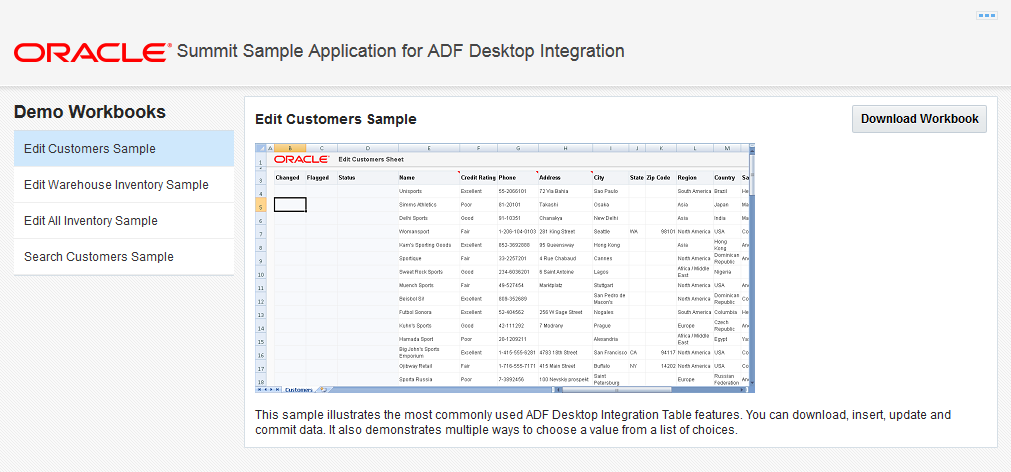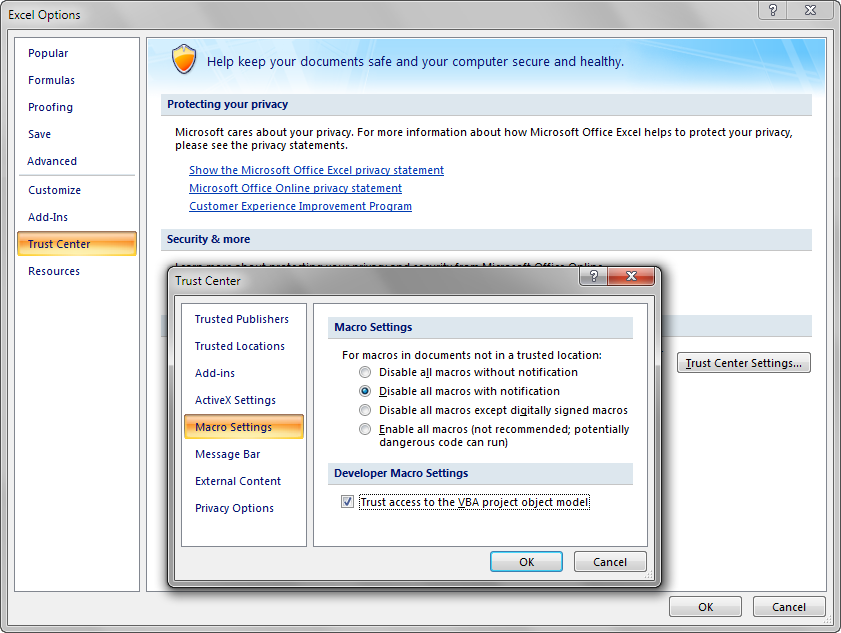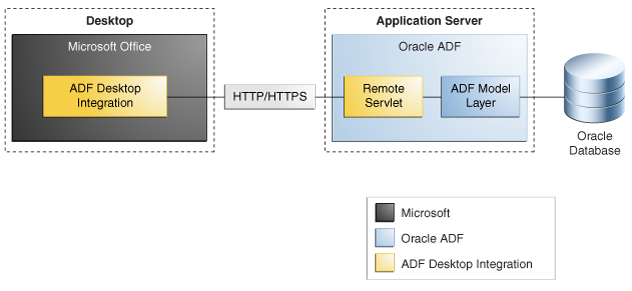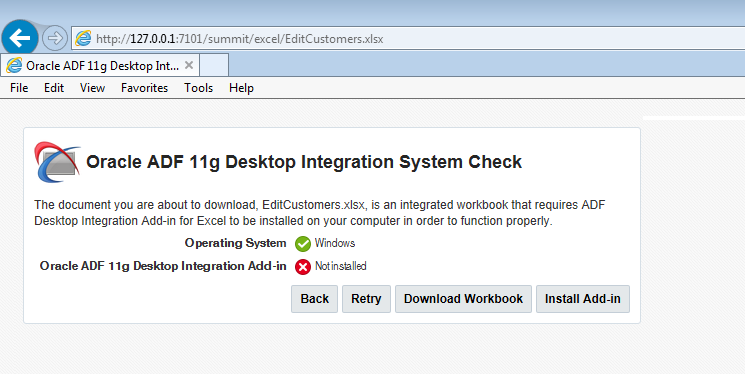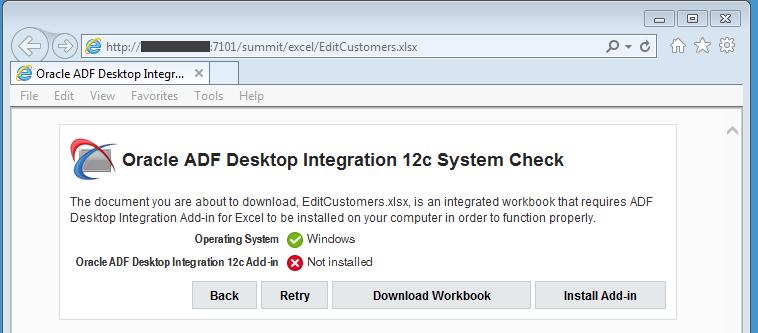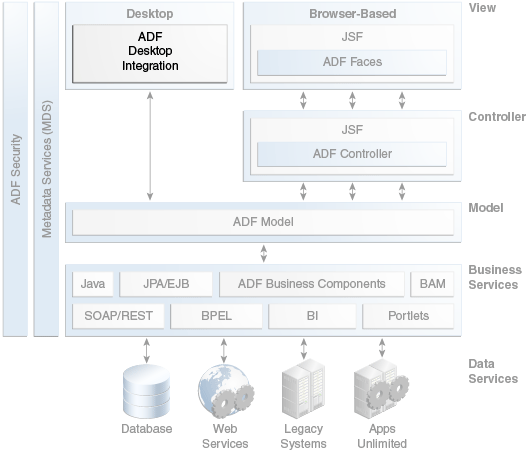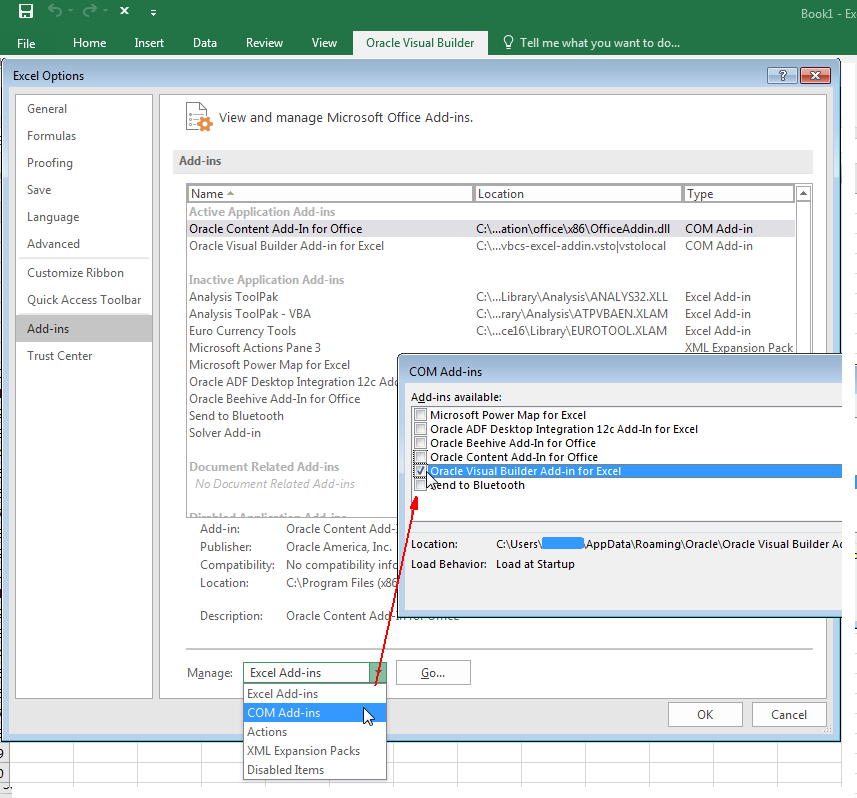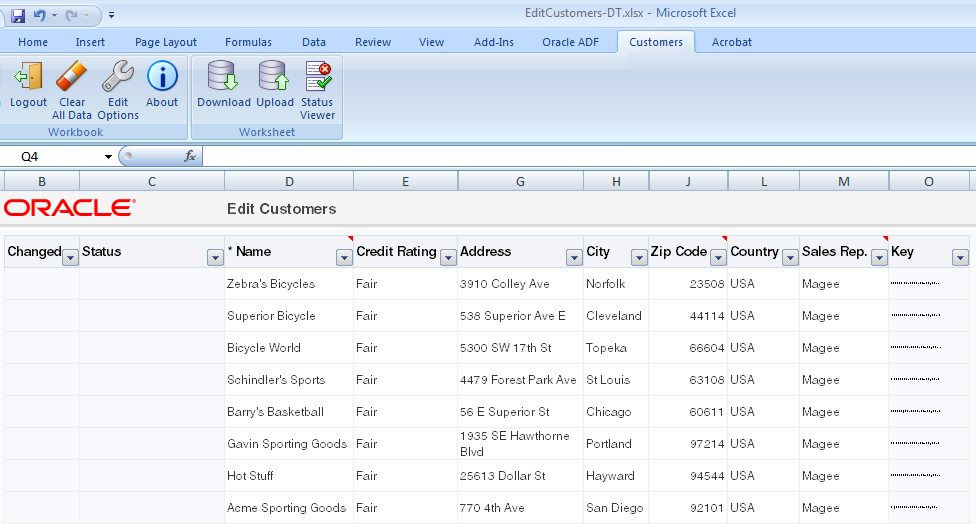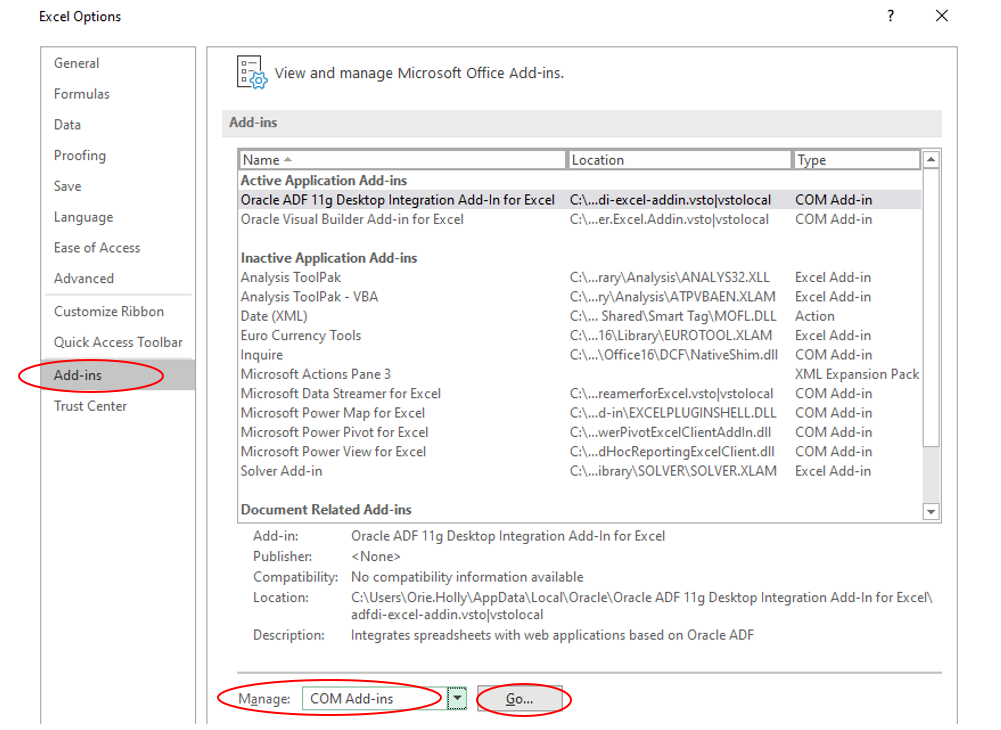Oracle Adf 11g Desktop Integration Add In For Excel
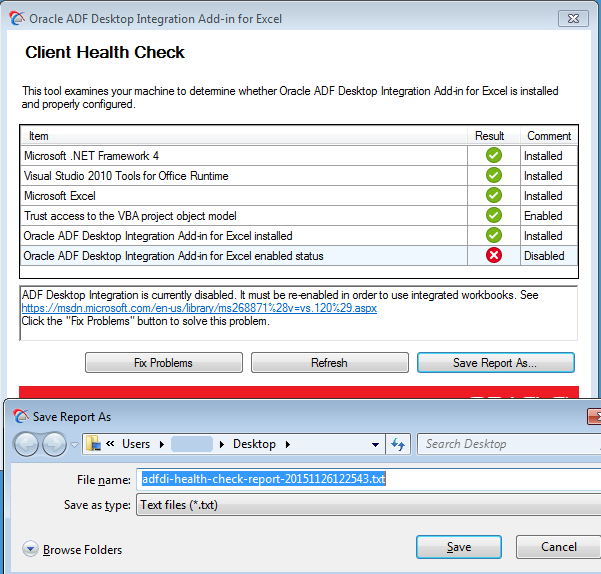
Imagine a world where spreadsheets and complex enterprise applications dance harmoniously. No more tedious copy-pasting between systems, no more struggling to reconcile data silos. Instead, picture a seamless flow of information, empowering business users to manipulate data with the familiar comfort of Microsoft Excel, while directly interacting with the powerful engine of Oracle ADF.
The Oracle ADF 11g Desktop Integration Add-in for Excel, though a mature technology, continues to be a valuable tool for bridging the gap between desktop productivity and enterprise data. It allows users to interact with ADF applications directly from within Excel, streamlining data entry, reporting, and analysis. This article explores the background and significance of this integration tool, highlighting its impact on business productivity and efficiency.
A Bridge Between Worlds: ADF and Excel
Oracle Application Development Framework (ADF) is a Java EE framework that simplifies the development of enterprise applications. However, many business users are most comfortable working within the familiar environment of Microsoft Excel. The Desktop Integration Add-in acts as a crucial bridge, allowing these users to leverage the power of ADF applications without needing to navigate complex interfaces.
It essentially brings the data and functionality of ADF applications directly into Excel. This empowers users to perform tasks like data entry, validation, and reporting using the tools they already know and love.
Background and Significance
The need for such an integration arose from the ever-present challenge of data silos. Often, information resides within enterprise applications, inaccessible to business users who need to analyze and manipulate it in a user-friendly way. The ADF Desktop Integration Add-in addressed this issue head-on.
Prior to its introduction, exporting and importing data between ADF applications and Excel was a manual and error-prone process. The Add-in automates much of this process, significantly reducing the risk of data inconsistencies and improving overall data quality.
The significance of this tool extends beyond simple data transfer. It empowers business users to become more self-sufficient. They can perform ad-hoc analysis, generate custom reports, and update data directly from Excel, without relying on IT support for every task.
Key Features and Benefits
The ADF Desktop Integration Add-in boasts several key features that contribute to its effectiveness. These include: data binding, allowing seamless synchronization between Excel and the ADF application; data validation, ensuring data integrity by enforcing business rules; and support for offline work, enabling users to work even when disconnected from the network.
These features translate into tangible benefits for organizations. Increased productivity is perhaps the most obvious. By streamlining data entry and reporting, the Add-in frees up valuable time for business users to focus on more strategic tasks.
Improved data accuracy is another significant benefit. The built-in data validation features help to prevent errors, leading to more reliable insights and better decision-making.
Impact on Business Processes
The ADF Desktop Integration Add-in can have a profound impact on a wide range of business processes. In finance, it can be used to streamline budgeting, forecasting, and financial reporting. In sales, it can facilitate sales data analysis and customer relationship management.
In supply chain management, it can be used to track inventory levels and manage logistics. Across all these areas, the Add-in helps to improve data visibility and collaboration.
“The Oracle ADF Desktop Integration Add-in for Excel can significantly improve the efficiency and accuracy of data-related tasks for business users,”according to an Oracle white paper on the subject.
A Continuing Legacy
While newer technologies and integration methods have emerged since its initial release, the Oracle ADF 11g Desktop Integration Add-in for Excel remains a valuable asset for many organizations. Its simplicity and ease of use continue to make it a popular choice for connecting Excel to ADF applications.
Its legacy lies in its contribution to bridging the gap between technical enterprise systems and the daily workflows of business users. It empowered users to harness the power of enterprise data within the familiar comfort of their spreadsheets.
The Add-in serves as a reminder that technology should empower, not intimidate. By making complex systems more accessible, we can unlock the true potential of data and drive better business outcomes.
